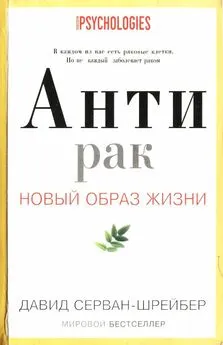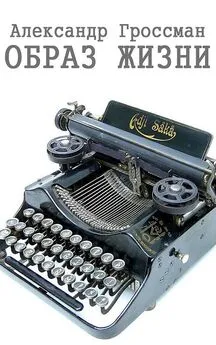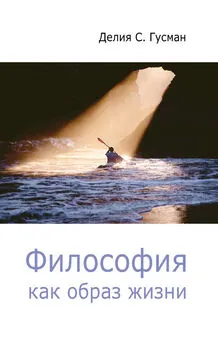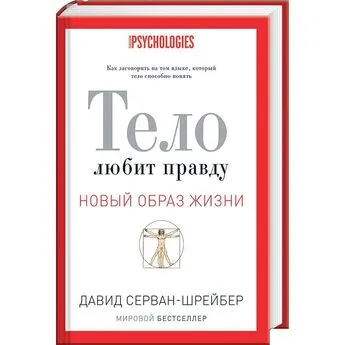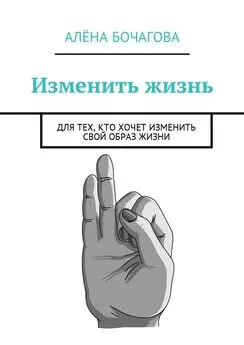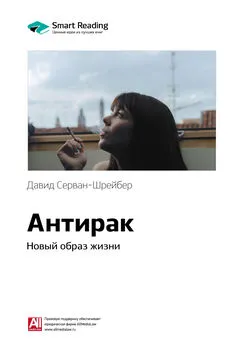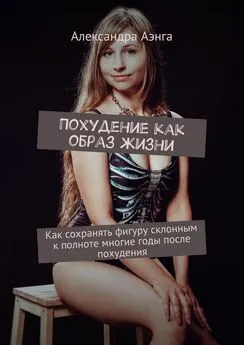Давид Серван-Шрейбер - Антирак. Новый образ жизни
- Название:Антирак. Новый образ жизни
- Автор:
- Жанр:
- Издательство:РИПОЛ классик
- Год:2010
- Город:Москва
- ISBN:978-5-386-02111-5
- Рейтинг:
- Избранное:Добавить в избранное
-
Отзывы:
-
Ваша оценка:
Давид Серван-Шрейбер - Антирак. Новый образ жизни краткое содержание
Антирак. Новый образ жизни - читать онлайн бесплатно ознакомительный отрывок
Интервал:
Закладка:
50. Labrecque, L., S. Lamy, A. Chapus, et al., “Combined Inhibition of PDGF and VEGF Receptors by Ellagic Acid, a Dietary-Derived Phenolic Compound,” Carcinogenesis 26, no. 4 (2005): 821-26.
51. Ibid.
52. Hanausek, M., Z. Walaszek, and T. J. Slaga, “Detoxifying Cancer Causing Agents to Prevent Cancer,” Integrative Cancer Therapies 2, no. 2 (2003): 139-44.
53. Seeram, N., L. Adams, Y. Zhang, et al., “Blackberry, Black Raspberry, Blueberry, Cranberry, Red Raspberry, and Strawberry Extracts Inhibit Growth and Stimulate Apoptosis of Human Cancer Cells in Vitro,” Journal of Agricultural and Food Chemistry 54 (2006): 9329-39.
54. Béliveau, R., and D. Gingras, Les aliments contre le cancer.
55. Stoner, G. D., et al., “Cancer Prevention with Freeze-Dried Berries and Berry Components,” Seminars in Cancer Biology 17, no. 5 (2007): 403-10.
56. Stoner, G. D., “Commentary—Foodstuffs for Preventing Cancer: The Preclinical and Clinical Development of Berries,” Cancer Prevention Research 187 (2009). DOI: doi: 10.1158/1940-6207.CAPR-08-0226.
57. Vizzotto, M., “Inhibition of Invasive Breast Cancer Cells by Selected Peach and Plum Phenolic Antioxidants” (PhD diss., Texas A&M University, August 2005).
58. Altman, L. K., “New Drug Fights Second Kind of Cancer,” New York Times , May 14, 2001.
59. Folkman J., and R. Kalluri, “Cancer Without Disease,” Nature 427, no. 6977 (2004): 787.
60. Plouzek, C. A., H. P. Ciolino, R. Clarke, et al., “Inhibition of P-glycoprotein Activity and Reversal of Multidrug Resistance in Vitro by Rosemary Extract,” European Journal of Cancer 35, no. 10 (1999): 1541-45.
61. Lamy, S., et al., “The Dietary Flavonols Apigenin and Luteolin Inhibit PDGF-Dependent Vascular Smooth Muscle Cell Migration,” Cancer Research , in submission.
62. Béliveau, R., and D. Gingras, Cuisiner avec les aliments contre le cancer (Outremont, Canada: Trécarré, 2006).
63. Yokoi, K., T. Sasaki, C. D. Bucana, et al., “Simultaneous Inhibition of EGFR, VEGFR, and Platelet-Derived Growth Factor Receptor Signaling Combined with Gemcitabine Produces Therapy of Human Pancreatic Carcinoma and Prolongs Survival in an Orthotopic Nude Mouse Model,” Cancer Research 65, no. 22 (2005): 10371-80.
64. Ramesha, A., N. Rao, A. R. Rao, et al., “Chemoprevention of 7,12-Dimethylbenz- [a]anthracene-Induced Mammary Carcinogenesis in Rat by the Combined Actions of Selenium, Magnesium, Ascorbic Acid and Retinyl Acetate,” Japanese Journal of Cancer Research 81, no. 12 (1990): 1239-46.
65. Ibid.
66. Canene-Adams, K., et al., “Combinations of Tomato and Broccoli Enhance Antitumor Activity in Dunning r3327-h Prostate Adenocarcinomas,” Cancer Research 67, no. 2 (2007): 836-43.
67. Ramesha, et al., “Chemoprevention of 7,12-Dimethylbenz[a]anthracene-Induced Mammary Carcinogenesis . . . ”
68. Chohan, M., G. Forster-Wilkins, and E. Opara, “Determination of the Antioxidant Capacity of Culinary Herbs Subjected to Various Cooking and Storage Processes Using the ABTS(*+) Radical Cation Assay,” Plant Foods for Human Nutrition 63, no. 2 (June 2008): 47-52.
69. Lamy, S., et al., “The Dietary Flavonols . . . ”
70. Campbell, The China Study .
71. Lanzmann-Petithory, D., CANCERALCOOL: Consommation de boissons alcoolisées (vin, bière et alcools forts) et mortalité par différents types de cancers sur une cohorte de 100 000 sujets suivie depuis 25 ans., in Premier Colloque Final—Programme National de Recherche en Alimentation et Nutrition Humaine (PNRA). (Paris: Agence Nationale de la Recherche et INRA, 2009).
72. Servan-Schreiber, D., R. Béliveau, and M. De Lorgeril, “Deux verres de vin rouge n’augmentent pas les risques de cancer,” Le Monde , March 21, 2009.
73. De Lorgeril, M., and P. Salen, Alcool, vin et santé (Monaco: Alpen Editions, 2007).
74. Baglietto, L., et al., “Does Dietary Folate Intake Modify Effect of Alcohol Consumption on Breast Cancer Risk? Prospective Cohort Study,” BMJ 331, no. 7520 (2005): 80.
75. Thorand, B., et al., “Intake of Fruits, Vegetables, Folic Acid and Related Nutrients and Risk of Breast Cancer in Postmenopausal Women,” Public Health Nutrition 1, no. 3 (1998): 147-56.
76. Tjonneland, A., et al., “Folate Intake, Alcohol and Risk of Breast Cancer Among Postmenopausal Women in Denmark,” European Journal of Clinical Nutrition, 60, no. 2 (2006): 280-86.
77. Chao, C., et al., Alcoholic Beverage Intake and Risk of Lung Cancer: The California Men’s Health Study (2008).
78. Surh, Y.-J., “Cancer Chemoprevention with Dietary Phytochemicals,” Nature Reviews Cancer 3, no. 10 (2003): 768-80.
79. Ibid.
80. DeVita, V. T., S. A. Rosenberg, and S. Hellman, eds., Cancer: Principles and Practice of Oncology, 7th ed. (Baltimore: Lippincott Williams & Wilkins, 2005).
81. American Cancer Society, “Nutrition for the Person with Cancer During Treatment: A Guide for Patients and Families,” 2006.
82. Campbell, The China Sudy.
83. O’Keefe, J. J., and L. Cordain, “Cardiovascular Disease Resulting from a Diet and Lifestyle at Odds with Our Paleolithic Genome: How to Become a 21st-Century Hunter-Gatherer,” Mayo Clinic Proceedings 79, no. 1 (2004): 101-8.
84. Cordain, L., S. Eaton, A. Sebastian, et al., “Origins and Evolution of the Western Diet: Health Implications for the 21st Century,” American Journal of Clinical Nutrition 81, no. 2 (2005): 341-54.
85. Knoops, et al., “Mediterranean Diet . . . ”
86. De Lorgeril, M., P. Salen, J. L. Martin, et al., “Mediterranean Diet, Traditional Risk Factors, and the Rate of Cardiovascular Complications After Myocardial Infarction: Final Report of the Lyon Diet Heart Study,” Circulation 99, no. 6 (1999): 779-85.
87. Kris-Etherton, P., R. H. Eckel, B. V. Howard, et al., “AHA Science Advisory: Lyon Diet Heart Study. Benefits of a Mediterranean-Style, National Cholesterol Education Program/American Heart Association Step I Dietary Pattern on Cardiovascular Disease,” Circulation 103, no. 13 (2001): 1823-25.
88. Renaud, S., M. de Lorgeril, J. Delaye, et al., “Cretan Mediterranean Diet for Prevention of Coronary Heart Disease,” American Journal of Clinical Nutrition 61, no. 6, supp. (1995): 1360S-67S.
89. Pollan, M., “Unhappy Meals,” New York Times Magazine , January 28, 2007.
90. World Cancer Research Fund, Food, Nutrition and the Prevention of Cancer: A Global Perspective (London: World Cancer Research Fund and American Institute for Research on Cancer, 2007).
91. Kikuzaki, H., and N. Nakatani, “Antioxidant Effects of Some Ginger Constituents,” Journal of Food Science 58, no. 6 (1993): 1407-10.
92. Zhou, H.-Y., J.-K. Shen, J.-S. Hou, et al., “Experimental Study on Apoptosis Induced by Elemene in Glioma Cells,” Aizheng 22, no. 9 (2003): 959-63.
93. Wang, G., “Element of Ginger Triggers Cell Death, Enhances Cisplatin—Abstract 2981,” American Association for Cancer Research (2004).
94. Jaga, K., and H. Duvvi, “Risk Reduction for DDT Toxicity and Carcinogenesis Through Dietary Modification,” Journal of the Royal Society of Health 121, no. 2 (2001): 107-13.
95. Cover, C. M., S. J. Hsieh, E. J. Cram, et al., “Indole-3-Carbinol and Tamoxifen Cooperate to Arrest the Cell Cycle of MCF-7 Human Breast Cancer Cells,” Cancer Research 59, no. 6 (1999): 1244-51.
96. Gamet-Payrastre, L., P. Li, S. Lumeau, et al., “Sulforaphane, a Naturally Occurring Isothiocyanate, Induces Cell Cycle Arrest and Apoptosis in HT29 Human Colon Cancer Cells,” Cancer Research 60, no. 5 (2000): 1426-33.
97. Singh, S. V., et al., “Sulforaphane Inhibits Prostate Carcinogenesis and Pulmonary Metastasis in TRAMP Mice in Association with Increased Cytotoxicity of Natural Killer Cells,” Cancer Research 69 (2009): 2117-25.
98. Canane-Adams, et al., “Combinations of Tomato and Broccoli . . .”
99. Knoops, et al., “Mediterranean Diet . . .”
100. Ramesha, et al., “Chemoprevention of 7, 12-dimethylbenz[a]anthracene-Induced Mammary Carcinogenesis . . .”
101. Canane-Adams, et al., “Combinations of Tomato and Broccoli . . .”
102. Ballard-Barbash, R., and A. McTiernan, “Is the Whole Larger Than the Sum of the Parts? The Promise of Combining Physical Activity and Diet to Improve Cancer Outcomes,” Journal of Clinical Oncology 25, no. 17 (2007): 2335-37.
103. Beljanski, M., and M. S. Beljanski, “Three Alkaloids as Selective Destroyers of Cancer Cells in Mice: Synergy with Classic Anticancer Drugs,” Oncology 43, no. 3 (1986): 198-203.
104. Jacobs, D. R., et. al., “Food Synergy: An Operational Concept for Understanding Nutrition,” American Journal of Clinical Nutrition 89, supp. (2009): 1S-6S.
105. Liu, R. H., “Potential Synergy of Phytochemicals in Cancer Prevention: Mechanism of Action,” Journal of Nutrition 134, no. 12 supp., 3479S-3485S.
106. Pierce, J. P., et al., “Greater Survival After Breast Cancer in Physically Active Women with High Vegetable-Fruit Intake Regardless of Obesity,” Journal of Clinical Oncology 25, no. 17 (2007): 2345-51.
107. Khaw, K.-T., et al., “Combined Impact of Health Behaviours and Mortality in Men and Women: The EPIC-Norfolk Prospective Population Study,” PLoS Medicine 5, no. 1 (2008): e12.
108. Hsing, A. W., A. P. Chokkalingam, Y.-T. Gao, et al., “Allium Vegetable and Risk of Prostate Cancer: A Population-Based Study,” Journal of the National Cancer Institute 94, no. 21 (2002): 1648-51; Thomson, M., and M. Ali, “Garlic [Allium sativum]: A Review of Its Potential Use as an Anti-Cancer Agent,” Current Cancer Drug Targets 3, no. 15 (2003): 67-81.
109. Ingram, D., “Diet and Subsequent Survival in Women with Breast Cancer,” British Journal of Cancer 69, no. 3 (1994): 592-95.
110. Chan, J. M., C. N. Holick, M. F. Leitzmann, et al., “Diet After Diagnosis and the Risk of Prostate Cancer Progression, Recurrence, and Death (United States),” Cancer Causes & Control 17, no. 2 (2006): 199-208.
111. Canene-Adams, et al., “Combinations of Tomato and Broccoli . . .”
112. Zhang, M., et al., “Dietary Intakes of Mushrooms and Green Tea Combine to Reduce the Risk of Breast Cancer in Chinese Women,” International Journal of Cancer 15 (2009): 1404-8.
113. Maruyama, H., H. Tamauchi, M. Hashimoto, et al., “Antitumor Activity and Immune Response of Mekabu Fucoidan Extracted from Sporophyll of Undaria pinnatifida, ” Vivo 17, no. 3 (2003): 245-49.
114. Shimizu, J., “Proportion of Murine Cytotoxic T Cells Is Increased by High Molecular-Weight Fucoidan Extracted from Okinawa Mozuku ( Cladosiphon okamuranus ),” Journal of Health Sciences 51 (2005): 394-97.
115. Vizzotto, “Inhibition of Invasive Breast Cancer Cells . . .”
116. Taraphdar, A. K., M. Roy, and R. K. Bhattacharya, “Natural Products as Inducers of Apoptosis: Implication for Cancer Therapy and Prevention,” Current Science 80 (2001): 1387-96.
117. Rooprai, H. K., A. Kandanearatchi, S. L. Maidment, et al., “Evaluation of the Effects of Swainsonine, Captopril, Tangeretin and Nobiletin on the Biological Behaviour of Brain Tumour Cells in Vitro,” Neuropathology & Applied Neuro-biology 27, no. 1 (2001): 29-39.
Читать дальшеИнтервал:
Закладка:
